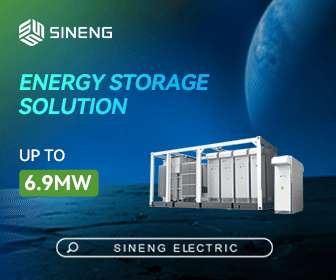Nations Can Use Battery Recycling to Augment Precious Minerals and Cut Geopolitical Risks, Says Cleantech Group
Advances in battery recycling offer a significant opportunity for countries to build caches of precious minerals used in electric vehicles, and additionally mitigate geopolitical risks arising notably from China’s dominance, according to Cleantech Group.
The U.S., the EU, and China have hit multiple milestones in advancing circularity — a sustainability method that encourages reuse and recycling — and today have access to technologies that use significantly less energy and nearly halve emissions from mineral production by recycling battery minerals, such as lithium, nickel, graphite and cobalt.

According to the IEA, global demand for lithium is estimated to grow 870% by 2040, with demand for graphite, nickel and cobalt all more than doubling. In this environment, recycling is a prudent choice, enabling nations to unlock cheaper, lower emissions, and domestic supplies of battery materials for manufacturing.
“Battery manufacturers, automobile OEMs, and refineries are creating localized recycling supply chains to feed the surging demand for battery minerals,” said Parker Bovée, Cleantech Group Associate, Waste & Recycling.
European and Chinese automakers are expected to leverage direct recycling, one of three key processes to emerge, as European companies seek higher returns on extended producer responsibility (EPR) mandates and China pursues improved economics on LFP (Lithium Iron Phosphate) battery recycling, he added.
Other key findings:
- Three recycling technologies. Three major recycling processes have emerged as viable options, with varied levels of technology readiness for commercial scaling. Direct recycling restores battery materials for reuse in batteries or energy storage, while hydrometallurgy enables liquid recovery of all minerals, albeit with higher wastes and higher emissions of greenhouse gases. Pyrometallurgy, the industry incumbent, accepts mixed chemistry waste, but triggers higher emissions and does not usually recycle lithium.
- Global focus on building China alternatives. With China leveraging its strength in mineral refining to become the leading maker of EVs, the rest of the world focuses on loosening the Asian giant’s hold. Brazil is aspiring to be South America’s China, while the U.S. is pursuing sources of precious minerals outside China. The U.S. government has also budgeted $7B to advance domestic refining of minerals, cell manufacturing, and recycling of batteries. The EU and several other countries are investing billions of dollars to achieve similar goals.
- Automakers are investing in, but not integrating battery recycling. To meet EPR mandates, automakers secure agreements with recyclers for collection, transportation, and recycling of their batteries. A select few companies — BYD, Tesla, and Northvolt — integrated recycling within their facilities, but most automakers view current recycling as unprofitable. Automaker’s integration of battery recycling is unlikely until EV batteries, not manufacturing scrap, becomes the dominant feedstock.
- Venture funding for recycling grows. Venture funding for battery recycling start-ups rose to $4.5B in 2023, doubling from the previous year. The bulk of the investments came from the U.S., on the strength of the Inflation Reduction Act of 2022. Investors include battery makers, refiners, mining giants, and automakers. Also driving recycling are joint ventures between automakers and battery recyclers. Incumbents across battery and automobile manufacturing like General Motors, Ford, Volkswagen, Honda, and LG help scale innovative recycling technologies from Aqua Metals, SK Group, and Ascend Elements through offtake agreements or technology licensing.
Cleantech Group | https://www.cleantech.com/









